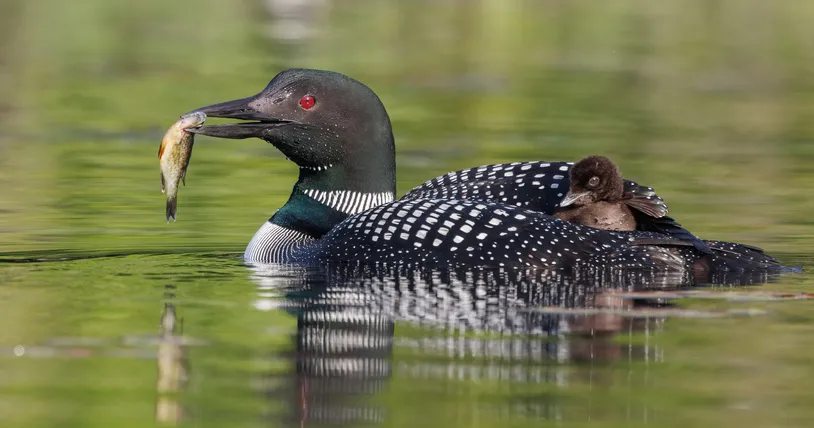The common loon, also known as the great northern diver, is one of the most iconic birds in North America. But, according to a new paper published in Ecology, this large diving bird is at risk due to reduced water clarity caused by climate change.
Authored by Chapman University professor Walter Piper, the paper suggests that July rainfall – which has increased in recent decades as a result of climate change – reduces water clarity in loon territories, which in turn makes it difficult for adult loons to find and catch their prey under water.
Loons in dark water
The study, conducted by Piper and colleagues Max Gline and Kevin Rose from Rensselaer Polytechnic Institute, recorded water clarity in 127 lakes in northern Wisconsin from 1995 to 2021.
During this 25-year period, the researchers found a consistent decline in water clarity, correlating with a rise in observed rainfall in recent decades – a result of climate change. The body weights of adult common loons and their chicks also declined. The researchers believe that the reduced water clarity is causing this loss of body weight, which in turn is leading to higher levels of chick mortality.
"it is quite possible that climatic changes alter water clarity and, hence, foraging efficiency of loons," says Piper.
"If so, reduced intake of food might prevent adult loons from maintaining optimal body condition and/or hamper the provisioning of chicks by adults, two patterns that could ultimately cause a decrease in local abundance or breeding range of the species."
Loons use the same foraging approach across their breeding range, suggesting that the impact of water clarity on breeding success found in Wisconsin is likely to be similar around the world, from Alaska to Iceland, says the paper.
Why is climate change reducing water clarity?
The researchers found that heavy rainfall in July – when chicks experience their most rapid growth – reduces water clarity. Conversely, light rainfall leads to higher water clarity and thus good foraging conditions for common loons. But why is this?
One theory, suggested in another study by Piper and his colleagues, is that heavy rain might be causing dissolved organic matter to leach into lakes from streams and shoreline areas. It is also possible that nutrients, such as fertilisers used on lawns, as well as pet waste or leaks from septic systems might be to blame.

An unclear future for loons
"Few animals on Earth are at once so beloved and so poorly understood as common loons," says Piper, whose three-decade-long study of loon behavioural ecology is set to continue.
Piper is in the process of setting up a second study population of loons in Minnesota, where he hopes to determine whether the recent decline in loon breeding success, which was recorded by the Minnesota Department of Natural Resources, is also the result of a loss of water clarity.
You may also be interested in:

